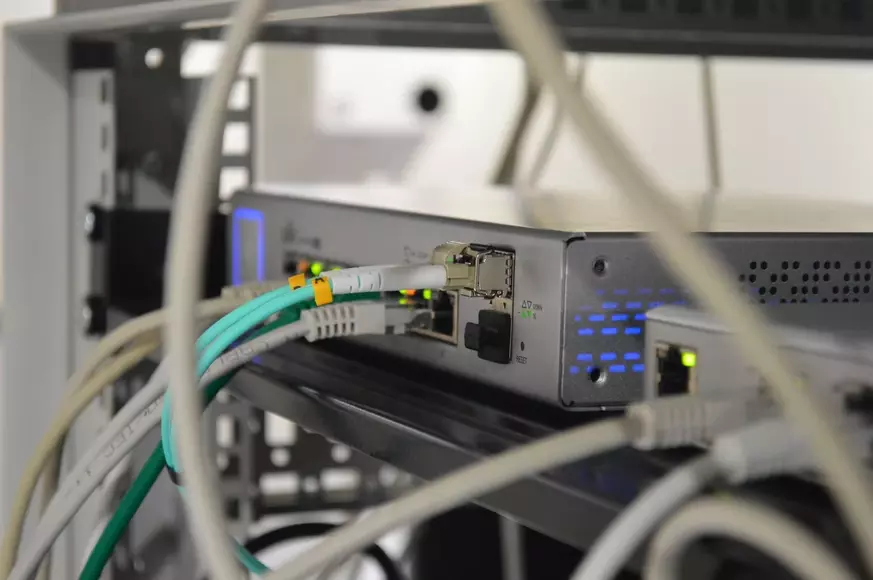Comments
- No comments found

In today's age, port forwarding has become an increasingly important tool to have in your arsenal.
With the rise of online gaming, streaming services, and other applications that require a high-speed internet connection, port forwarding has become a necessity for many people.
However, the concept of port forwarding can be confusing for beginners, especially if you're not familiar with networking. And yet it is still a relatively simple process, once you understand the basics. Therefore, in this guide, we'll give you a crash course in port forwarding, explaining what it is, how it works, and some tips to help you get started.

In a nutshell, port forwarding is a technique used to allow external devices access to your computer or home network. By forwarding ports, you can direct incoming traffic from the internet to specific applications on your device. This is often necessary for applications that require a high-speed internet connection, such as online gaming, streaming services, and VoIP (Voice over IP) calls.
Additionally, port forwarding can be used to improve the security of your home network. By only forwarding the ports that you need, you can reduce the chances of hackers and other malicious individuals gaining access to your device. And with VPN port forwarding, you can encrypt all of the traffic that is forwarded to your device, providing an additional layer of security. So, not only can port forwarding improve the speed and performance of your applications, but it can also help to keep your device and data safe.
Port forwarding is a way to forward incoming traffic from one port on your network to another port on a different computer or device. This is useful if you have an application that needs to be accessible from the internet, but you don't want to expose the entire computer or device to the internet.
For example, let's say you have a web server that you want to be accessible from the internet. You would need to open port 80 (the default port for HTTP traffic) on your router, and then forward traffic destined for that port to the IP address of your web server. You will also need to configure your web server to listen for traffic on port 80. Once all of this is set up, anyone who tries to access your web server by typing in your IP address will be able to connect, even though your computer is not directly exposed to the internet.
Now that you understand the basics of port forwarding, let's take a look at some tips that will help you get started.
One of the most important factors in setting up port forwarding is choosing the right router. Not all routers are created equal, and some are much better suited for port forwarding than others. When choosing a router, be sure to look for one that offers good support for port forwarding, as well as other features that might be important to you, such as VPN support, Guest Networking, and more.
Additionally, it's important to make sure that your router is properly configured. This includes setting up the correct IP address, subnet mask, gateway, and DNS servers. If you're not sure how to do this, you can check your router's documentation or contact your ISP (Internet Service Provider) for help.
One of the most common problems with port forwarding is that the IP address of your device changes over time. This can happen if you're using a dynamic IP address, which is assigned by your ISP. A static IP address, on the other hand, will never change. This is useful for port forwarding because it means that you can always forward traffic to the same IP address, even if it changes over time.
However, keep in mind that using a static IP address can be more complicated than using a dynamic one. Additionally, it may not be possible to use a static IP address with some ISPs. If you're not sure whether or not you can use a static IP address, be sure to check with your ISP before setting one up.
When setting up port forwarding, you'll need to choose which ports you want to forward. The most common ports that are forwarded are port 80 (for HTTP traffic) and port 443 (for HTTPS traffic). However, many other ports can be forwarded, depending on your needs.
It's important to make sure that the ports you choose are not already in use. For example, if you're setting up a web server, you would not want to use port 8080, as that is the default port for web servers. Additionally, make sure to choose high-numbered ports (above 1024), as lower-numbered ports are typically reserved for system services. F
While it's possible to forward multiple ports at once, it's not always necessary. It's oIt'sonly forward the ports that you absolutely will help to keep your network secure, as it reduces the number of potential entry points for attackers.
Additionally, forwarding too many ports can make your network more complicated to manage. If you're not sure which ports to forward, start with only the ones that you need, and then add more as needed.

While this is by no means an exhaustive guide, these tips should help you get started with port forwarding. Remember to choose the right router, use a static IP address, and only forward the ports that you need. With a little bit of effort, you should be able to set up port forwarding on your network and thus improve your internet connection without any problems.
Leave your comments
Post comment as a guest